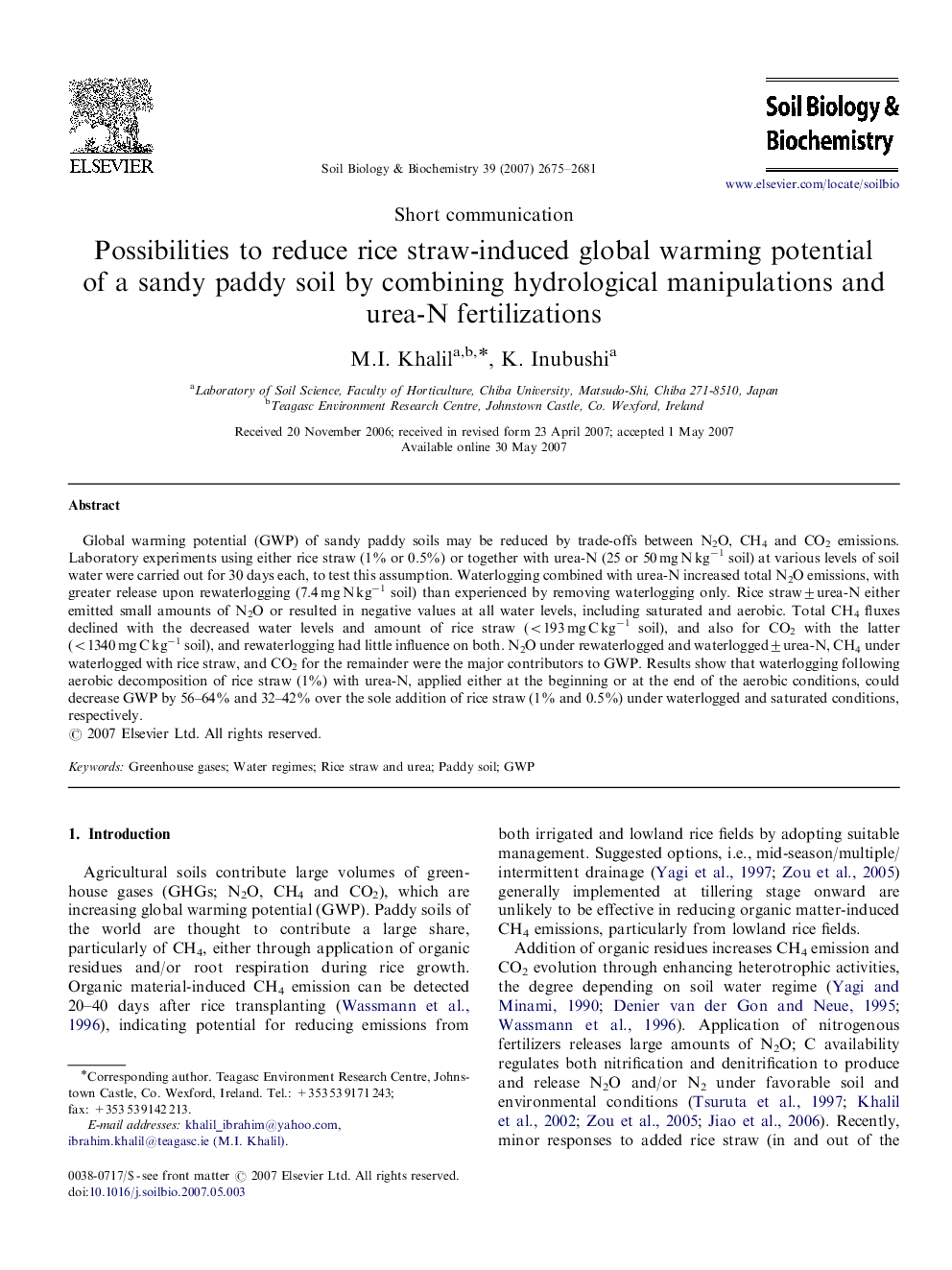| Article ID | Journal | Published Year | Pages | File Type |
|---|---|---|---|---|
| 2025933 | Soil Biology and Biochemistry | 2007 | 7 Pages |
Global warming potential (GWP) of sandy paddy soils may be reduced by trade-offs between N2O, CH4 and CO2 emissions. Laboratory experiments using either rice straw (1% or 0.5%) or together with urea-N (25 or 50 mg N kg−1 soil) at various levels of soil water were carried out for 30 days each, to test this assumption. Waterlogging combined with urea-N increased total N2O emissions, with greater release upon rewaterlogging (7.4 mg N kg−1 soil) than experienced by removing waterlogging only. Rice straw±urea-N either emitted small amounts of N2O or resulted in negative values at all water levels, including saturated and aerobic. Total CH4 fluxes declined with the decreased water levels and amount of rice straw (<193 mg C kg−1 soil), and also for CO2 with the latter (<1340 mg C kg−1 soil), and rewaterlogging had little influence on both. N2O under rewaterlogged and waterlogged±urea-N, CH4 under waterlogged with rice straw, and CO2 for the remainder were the major contributors to GWP. Results show that waterlogging following aerobic decomposition of rice straw (1%) with urea-N, applied either at the beginning or at the end of the aerobic conditions, could decrease GWP by 56–64% and 32–42% over the sole addition of rice straw (1% and 0.5%) under waterlogged and saturated conditions, respectively.
